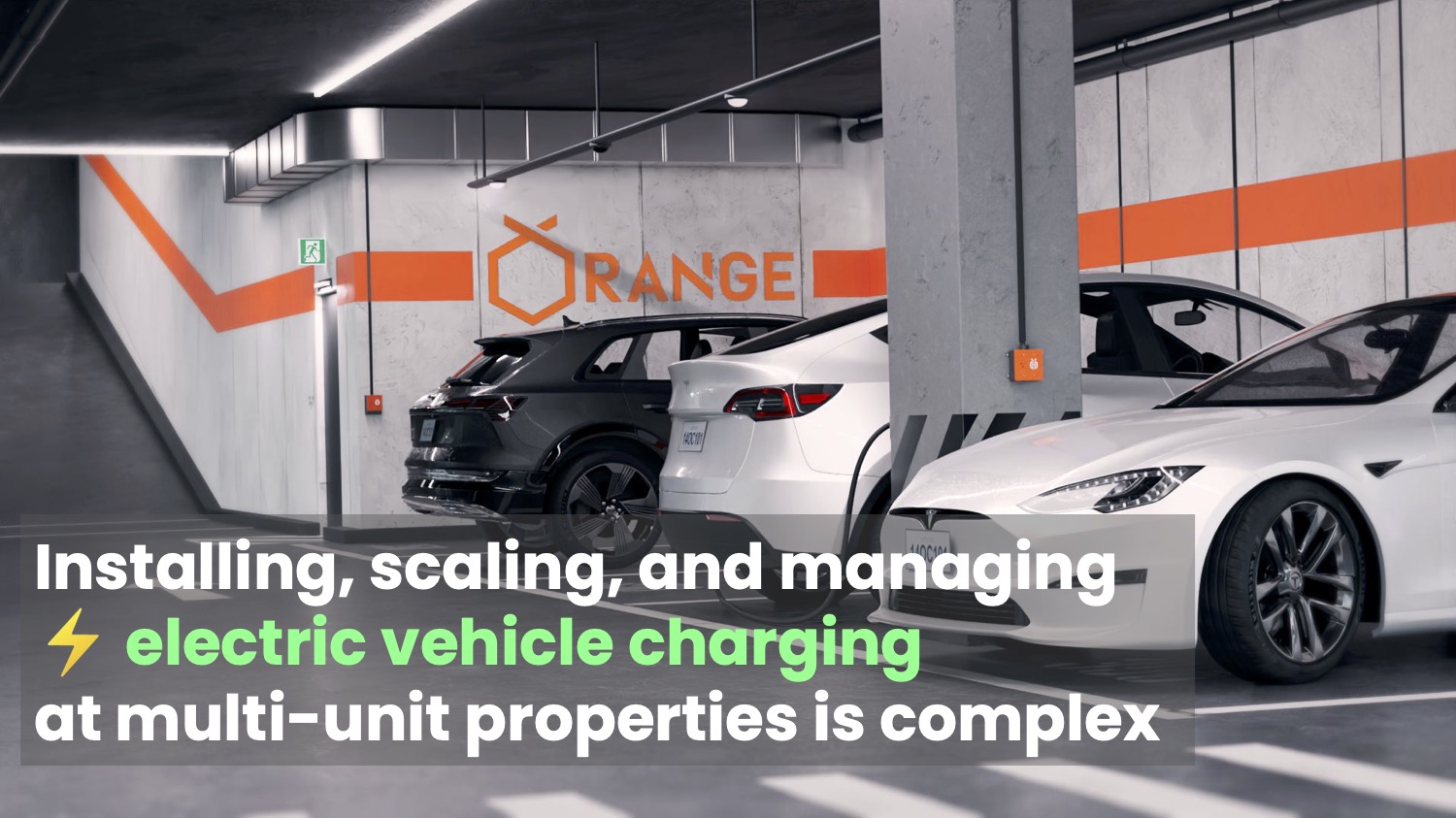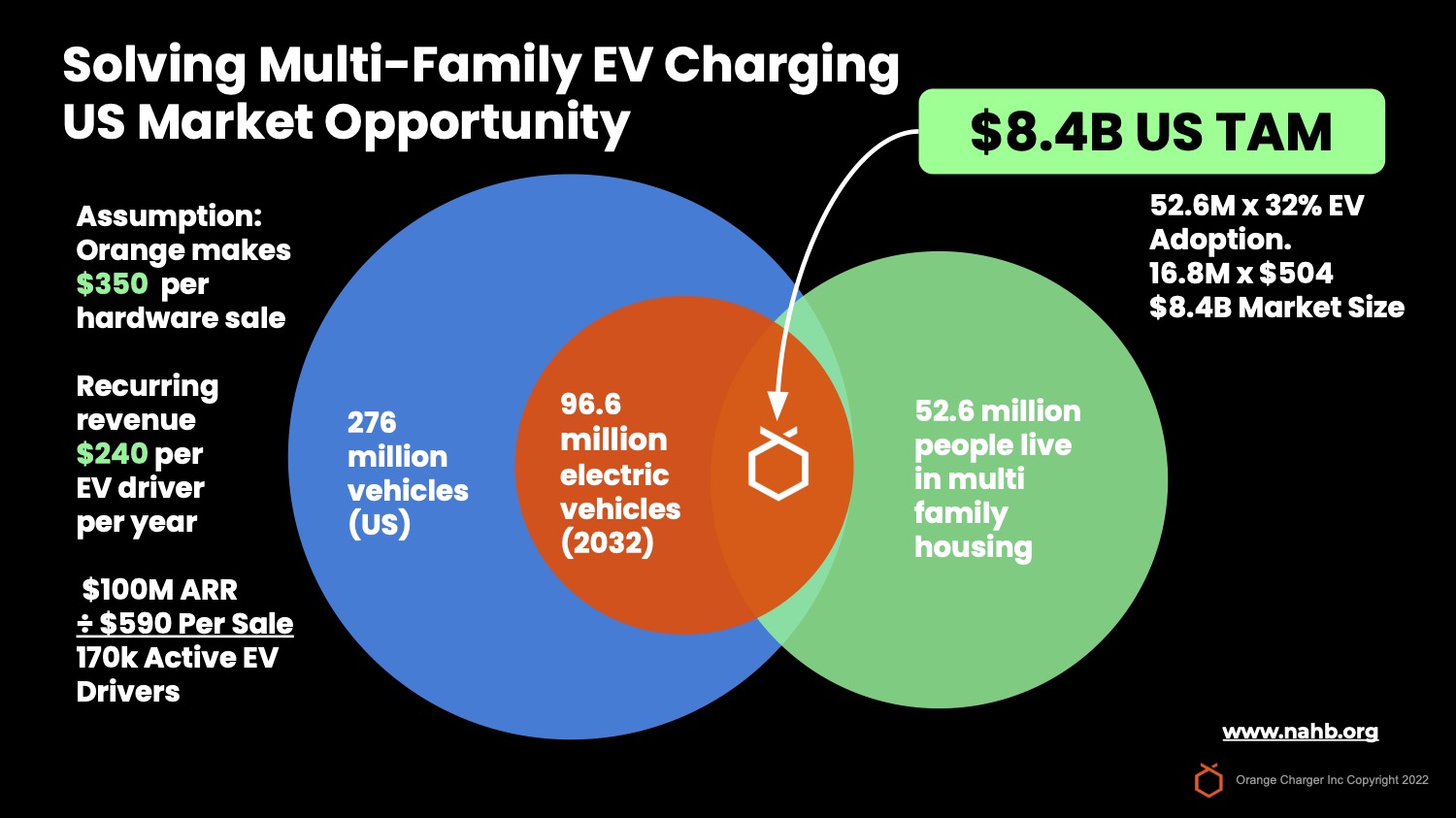Earlier this week, I wrote a story about EV charging company Orange and how it is taking a different approach to putting chargers everywhere. Instead of a few high-speed chargers, it makes it easy for multifamily dwellings (think apartment buildings) to put charger sockets everywhere there might be EVs, taking care of billing and such to turn electric sockets into a revenue stream for building owners while making it easy for EV owners to charge their cars.
It’s a clever model, replicating the benefits of charging at home using simple charger infrastructure. I asked the founders if they might be interested in sharing their pitch deck. To my delight, they said yes!
We’re looking for more unique pitch decks to tear down, so if you want to submit your own, here’s how you can do that.
Slides in this deck
- Cover slide
- Mission slide
- Problem slide
- Macroeconomic market slide (“Why now?”)
- Market size slide
- Solution slide
- Value proposition slide
- Product tech spec slide
- Product slide
- Competitive landscape slide
- Competitive advantage slide
- Business model slide
- Cash flow slide
- Go-to-market slide
- Team slide
- Advisers slide
- “The ask” slide
- Contact slide
- Appendices cover slide
- Appendix I: Product install photos
- Appendix II: 3-year financial projections
- Appendix III: Headcount slide
- Appendix IV: Sources and references
Three things to love
Orange Charging’s pitch deck is one of the best decks I’ve seen in a very long time — it looks good, it tells a coherent story and it touches on all the parts that investors want to see in a deck. It even includes great examples of slides that many startup founders get wrong. In fact, when I first scrolled through the deck, I found myself wondering if I would be using this as a teardown at all — what’s the use in criticizing something that’s almost perfect?
Let’s start by taking a peek at some of the highlights.
Amazing summary slide

[Slide 2] Setting the tone. Image Credits: Orange
You only get one chance to make a first impression, and Orange’s second slide does a hell of a job of that in several dimensions. Visually, this is a stunning slide; the bright orange stripe that runs along the walls of the garage (it looks like it may be a Photoshop job rather than a paint or vinyl job, but that doesn’t matter for the purpose of a slide deck); the three cars and the bright orange charger boxes are all great visuals.
Then, the text. It encapsulates the problem the company is solving in a really simple and easy-to-understand way.
For a perfect score here, I would have made this slide about the company. Make the text orange and change it to something like “We simplify installing, scaling and managing  electric vehicle charging in multiunit properties.” That way, it isn’t about the problem — it’s about the company and the solution. A small box showing the company’s progress and the purpose of this fundraise (“500 chargers installed in 75 locations, raising $2.5 million to 10x our install base”) would be even better.
electric vehicle charging in multiunit properties.” That way, it isn’t about the problem — it’s about the company and the solution. A small box showing the company’s progress and the purpose of this fundraise (“500 chargers installed in 75 locations, raising $2.5 million to 10x our install base”) would be even better.
Great overview of value propositions

[Slide 9] A great overview of Orange Charger’s win-win setup. Image Credits: Orange
Instead of rapid-charging from time to time or filling up only when you are empty, the company offers a solution that people who charge at home are used to: Whenever you get home, plug your car in, and you’re good to go whenever you get back to your car. Turning this charging paradigm into a company is essentially the core of what Orange is doing.
This slide helps explain why having a 110V or 240V socket installed, charging at 16 amps, is actually plenty for the vast majority of EV drivers. It also argues that lower installation costs (and the absence of a charging cable that can break) and ease of operation make its solution a great alternative to competitors.
Which is a fantastic setup for the two competition slides that follow.
Spectacular market slide

[Slide 5] Of course electric charging is going to be huge. Image Credits: Orange
On another slide, Orange makes the argument that EVs will cost the same as gasoline-powered cars by 2025 — I’m a little skeptical, but the date is less important than the fact that this is going to happen at some point. Add in government incentives (either punitively in the form of higher gasoline taxes or a more carrot-like approach with new incentives for electric vehicles), and you’ve got a really interesting market indeed.
In the rest of this teardown, we’ll take a look at three things Orange could have improved or done differently, along with its full pitch deck!
Pitch Deck Teardown: Orange’s $2.5M seed deck by Haje Jan Kamps originally published on TechCrunch















 English (US) ·
English (US) ·